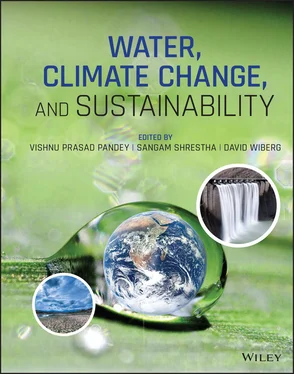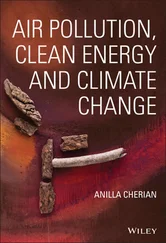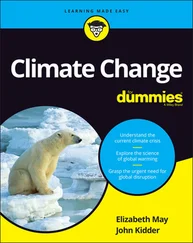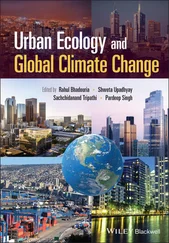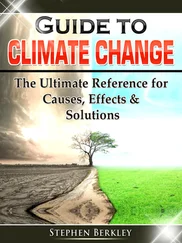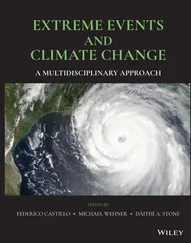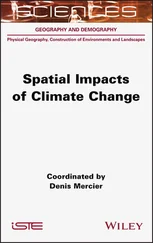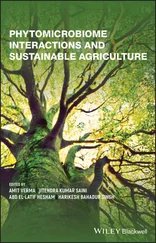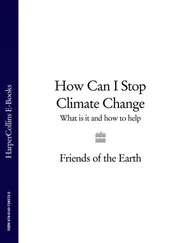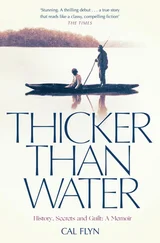37 Leseurre, L., Merea, C., Duprat de Paule, S., and Pinchart, A. (2014). Eco‐footprint: a new tool for the “Made in Chimex” considered approach. Green Chemistry, 16(3), 1139.
38 Levidow, L., Zaccaria, D., Maia, R. et al. (2014). Improving water‐efficient irrigation: Prospects and difficulties of innovative practices. Agricultural Water Management, 146, 84–94.
39 Liu, J., Zehnder, A., and Yang, H. (2007). Historical Trends in China’s Virtual Water Trade. Water International, 32(1), 78–90.
40 Madani, K., and Khatami, S. (2015). Water for Energy: Inconsistent Assessment Standards and Inability to Judge Properly. Current Sustainable/Renewable Energy Reports, 2(1), 10–16.
41 Manfredi, S. (2014). Methodology for life‐cycle based environmental sustainability assessment of non‐food biomass value chains.
42 Martin, M., Røyne, F., Ekvall, T., and Moberg, Å. (2018). Life cycle sustainability evaluations of bio‐based value chains: Reviewing the indicators from a Swedish perspective. Sustainability (Switzerland), 10(2).
43 Martins, A.A., Marques, F., Cameira, M. et al. (2018). Water footprint of microalgae cultivation in photobioreactor. Energy Procedia 153: 426–431.
44 Maupin, M.A., and Barber, N.L. (2005). Estimated withdrawals from principal aquifers in the United States, 2000. US Geological Survey Circular 1279.
45 Mckenna, P. (2009). Measuring Corn Ethanol’S Thirst for Water; MIT Technology Review. MIT: Cambridge, MA, USA, April 14.
46 Moreira, J.R. (2007). Water Use and Impacts Due Ethanol Production in Brazil. International Conference on Linkages in Energy and Water Use in Agriculture in Developing Countries, Organized by IWMI and FAO, ICRISAT, India, January 2007, 1–24.
47 Mousavi‐avval, S.H., Manandhar, A., and Shah, A. (2018). Fundamentals of energy analysis for crop production agriculture. Ohio State University Extension. Available at: https://ohioline.osu.edu/factsheet/fabe‐6621 (accessed on 29 December 2020)
48 Mousavi‐Avval, S.H., Rafiee, S., Sharifi, M. et al. (2017). Application of multi‐objective genetic algorithms for optimization of energy, economics and environmental life cycle assessment in oilseed production. Journal of Cleaner Production, 140, 804–815.
49 Mousavi Avval, S.H., Rafiee, S., Jafari, A., and Mohammadi, A. (2011). Improving energy productivity of sunflower production using data envelopment analysis (DEA) approach. Journal of the Science of Food and Agriculture, 91(10), 1885–1892.
50 Nguyen, T.T.H., Kikuchi, Y., Noda, M., and Hirao, M. (2015). A New Approach for the Design and Assessment of Bio‐based Chemical Processes toward Sustainability. Industrial & Engineering Chemistry Research, 54(20), 5494–5504.
51 Pahlavan, R., Omid, M., Rafiee, S., and Mousavi‐Avval, S.H. (2012). Optimization of energy consumption for rose production in Iran. Energy for Sustainable Development, 16(2), 236–241.
52 Patel, A. D., Meesters, K., den Uil, H., de Jong, E., Blok, K., and Patel, M. K. (2012). Sustainability assessment of novel chemical processes at early stage: application to biobased processes. Energy & Environmental Science, 5(9), 8430–8444.
53 Phan, T. V. T., Gallardo, C., and Mane, J. (2015). GREEN MOTION: a new and easy to use green chemistry metric from laboratories to industry. Green Chemistry, 17, 2846.
54 Phillips, S., Aden, A., Jechura, J. et al. (2007). Thermochemical Ethanol via Indirect Gasification and Mixed Alcohol Synthesis of Lignocellulosic Biomass.
55 Postel, S.L. (1998). Water for Food Production: Will There Be Enough in 2025? BioScience, 48(8), 629–637.
56 Ramedani, Z., Rafiee, S., and Heidari, M.D. (2011). An investigation on energy consumption and sensitivity analysis of soybean production farms. Energy, 36(11), 6340–6344.
57 REN21. (2018). Renewables 2018 Global Status Report.
58 Robins, J.G., Jensen, K.B., Peel, M.D., and Waldron, B.L. (2009). Establishment of warm‐season grasses in summer and damage in winter under supplementary irrigation in a semi‐arid environment at high elevation in western United States of America. Grass and Forage Science, 64(1), 42–48.
59 Ruiz‐Mercado, G.J., Smith, R. L., and Gonzalez, M.A. (2012). Sustainability Indicators for Chemical Processes: I. Taxonomy. Industrial & Engineering Chemistry Research, 51(5), 2309–2328.
60 Ruiz‐Mercado, G.J., Gonzalez, M.A., and Smith, R.L. (2013). Sustainability Indicators for Chemical Processes: III. Biodiesel Case Study. Industrial & Engineering Chemistry Research, 52(20), 6747–6760.
61 Ruiz‐Mercado, G.J., Gonzalez, M.A., and Smith, R.L. (2014). Expanding GREENSCOPE beyond the gate: a green chemistry and life cycle perspective. Clean Technologies and Environmental Policy, 16(4), 703–717.
62 Saha, N.K., Balakrishnan, M., and Batra, V.S. (2005). Improving industrial water use : case study for an Indian distillery, 43, 163–174.
63 Saling, P., Kicherer, A., Dittrich‐Krämer, B. et al. (2002). Eco‐efficiency analysis by basf: the method. The International Journal of Life Cycle Assessment, 7(4), 203–218.
64 Saling, P., Schöneboom, J., Künast, C. et al. (2014). Assessment of Biodiversity within the Holistic Sustainability Evaluation Method of AgBalance. In 9th International Conference LCA of Food. San Francisco, CA.
65 Schmidt, I., Meurer, M., Saling, P. et al. (2004). SEEbalance®: Managing Sustainability of Products and Processes with the Socio‐Eco‐Efficiency Analysis by BASF. Greener Management International. Greenleaf Publishing.
66 Van Schoubroeck, S., Van Dael, M., Van Passel, S., and Malina, R. (2018). A review of sustainability indicators for biobased chemicals. Renewable and Sustainable Energy Reviews, 94 (June), 115–126.
67 Schwalbe, Z. (2017). Understanding Plant Water Use: Evapotranspiration (ET). Available at: https://coagmet.colostate.edu/extended_etr_about.php(accessed on 7 June 2019)
68 Sheldon, R.A. (2018). Metrics of Green Chemistry and Sustainability: Past, Present, and Future. ACS Sustainable Chemistry and Engineering, 6 (1), 32–48.
69 Sheldon, R.A., and Sanders, J.P.M. (2015). Toward concise metrics for the production of chemicals from renewable biomass. Catalysis Today, 239, 3–6.
70 Sikdar, S.K., Sengupta, D., and Mukherjee, R. (2017). Statistical Algorithms for Sustainability Measurement and Decision Making. In Measuring Progress Towards Sustainability (pp. 153–184). Cham: Springer International Publishing.
71 Stone, K., Hunt, P., Cantrell, K., and Ro, K. (2013). Biomass Feedstock Production Impact on Water Resource Availability. In B. Singh (Ed.), Biofuel Crop Sustainability (1st ed., pp. 239–260). New Delhi, India: Wiley Blackwell.
72 Texas Water Development Board. (2019). Agricultural Water Conservation Irrigation Water Use Management. Available at: http://levellandtexas.org/DocumentCenter/View/1097/AgBrochure2_irrigation?bidId=(accessed on 28 August 2019)
73 UNCTAD. (2014). United Nations Conference on Trade and Development. World investment report. Available at: https://unctad.org/en/PublicationsLibrary/wir2014_en.pdf(Accessed on 6 May 2019).
74 United Nations Industrial Development Organization. (2019). Renewable Energy in Industrial Applications. Available at: https://www.solarthermalworld.org/sites/gstec/files/unido_renewables_industrial_applications.pdf(Accessed on 6 May 2019).
75 University of Illinois Extension. (2009). Water Use for Ethanol Production. Available at: https://extension.illinois.edu/ethanol/wateruse.cfm(Accessed on 7 June 2019)
76 USGS. (2016). How much water is there on, in, and above the Earth? Retrieved 13 February 2019. Available at: https://water.usgs.gov/edu/earthhowmuch.html(accessed on 28 August 2019)
77 VanLoocke, A., Twine, T.E., Zeri, M., and Bernacchi, C.J. (2012). A regional comparison of water use efficiency for miscanthus, switchgrass and maize. Agricultural and Forest Meteorology, 164, 82–95.
Читать дальше
